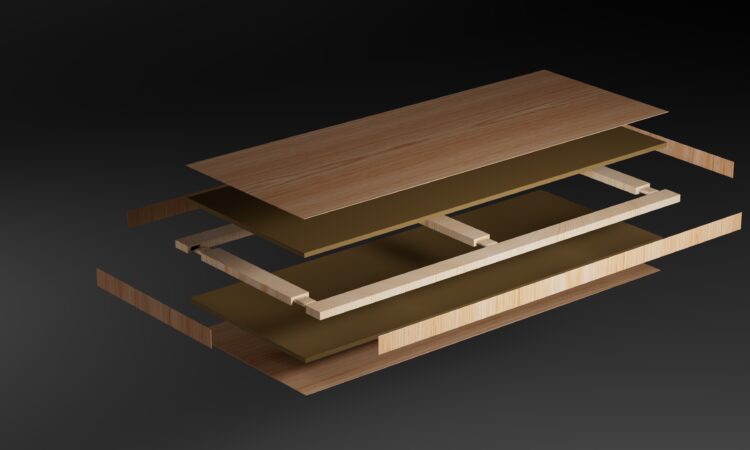Mastering Data Organization in Furniture Design: Free Webinar Overview
In the modern furniture manufacturing industry, efficiency and accuracy are key. But when data is unorganized or poorly managed, it can hinder decision-making and slow down the design-to-production process. To tackle these challenges, we’re offering an exclusive free webinar, “Shaping BOM Data into Required Results: The Power of Structured Information.” Below is a sneak peek of the key topics we’ll explore in this session, designed to empower furniture design engineers and manufacturers with essential data management skills.
1. The Importance of Data Organization
Unstructured or unorganized data can be a huge barrier to making informed decisions. Without a clear, organized approach to data management, it’s challenging to identify patterns, trends, or areas for improvement. In our webinar, we’ll discuss how SQL queries are vital in extracting meaningful insights from raw data. By using SQL queries effectively, you can generate actionable reports that help you better understand your business, improve productivity, and make confident decisions that drive efficiency.
2. Information Models in Mechanical CAD and Woodwork for Inventor
Data models are the backbone of any successful design-to-production process. In mechanical CAD software like Autodesk Inventor and Fusion 360, information models structure data hierarchically, allowing designers to visualize assemblies, subassemblies, and individual components in a clear, organized manner.
Woodwork for Inventor takes this a step further for the furniture industry, adding specific data models that cater to the unique needs of woodworking, cabinetry, and custom furniture production. These models allow designers to assign materials, generate specifications, and track complex assemblies, giving them a powerful foundation for generating accurate BOMs (Bill of Materials) and tailored reports.
3. Information Processing in Woodwork for Inventor
In Woodwork for Inventor, hierarchical data structures and customizable templates are key components in organizing information and generating valuable reports. The software enables users to structure product data into meaningful layers that can be easily navigated, filtered, and processed. By using templates, designers and manufacturers can tailor reports to suit their specific needs, whether they’re creating materials lists, production orders, or cost breakdowns. This flexibility ensures that every stage of production has the precise information it needs.
4. Report Types and Their Functionality
The webinar will also cover the different types of reports available in Woodwork for Inventor and how each type functions to extract critical information from your product data model. Some of the main report types include:
– Structural Reports: Present the product’s hierarchical structure, showcasing relationships between components and subassemblies.
– Flat Reports: Focus on a comprehensive list of all individual parts without considering assembly hierarchies.
– Material Summaries: Provide an overview of the materials required, helping teams prepare and source resources for production.
Each report type is designed to provide a unique perspective on your data, allowing you to select the best format for your manufacturing and production needs.
5. BOM Templates and Keywords for Custom Reports
Effective report generation relies on templates and keywords to pull the correct data from the model. In Woodwork for Inventor, BOM templates are highly customizable, giving users the flexibility to generate reports tailored to specific criteria. We’ll discuss how to create these templates and how to use keywords effectively within them to display critical information, such as part numbers, quantities, and material types, in the desired format.
6. Practical Guide to Developing Tailored Specifications
To meet the unique demands of furniture production, reports need to be customized with care. In this segment, we’ll provide a practical guide to developing specifications that align with your manufacturing needs. Whether you need to create lists for materials sourcing, component preparation, or final assembly, we’ll walk you through the steps to ensure each report is accurate, relevant, and easy to interpret.
7. BOM API for Advanced Use Cases
For teams with more complex needs, the BOM API in Woodwork for Inventor provides additional flexibility and control over report generation. The API allows for advanced customization, making it possible to integrate BOM data into external systems or automate the generation of highly specific reports. We’ll give an overview of how the API works and provide examples of how it can be used for advanced use cases, such as integrating with ERP systems or creating automated workflows.
8. Conclusion: Bringing It All Together
By the end of this webinar, you’ll have a comprehensive understanding of how to structure and manage data within Woodwork for Inventor to create actionable reports and tailored specifications. We’ll summarize the key takeaways, including the importance of data organization, the functionality of various report types, and practical tips for building BOM templates that support your manufacturing needs.
—
Ready to Take Control of Your Data? Register Today!
Join us for “Shaping BOM Data into Required Results: The Power of Structured Information” and gain the knowledge and tools you need to streamline your data processes, improve decision-making, and enhance your overall workflow in furniture design and manufacturing. Register now to secure your spot and take your data management skills to the next level!


